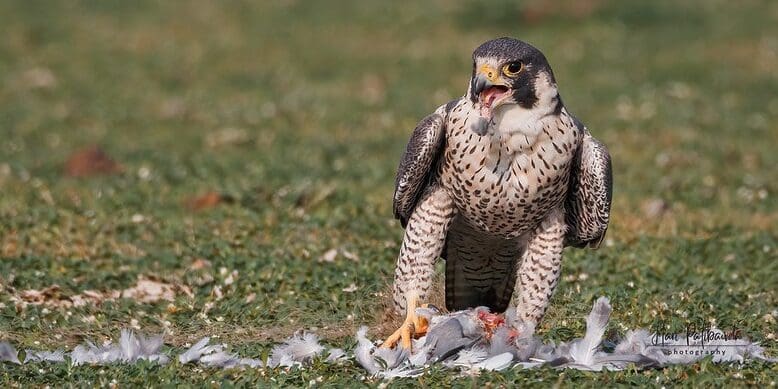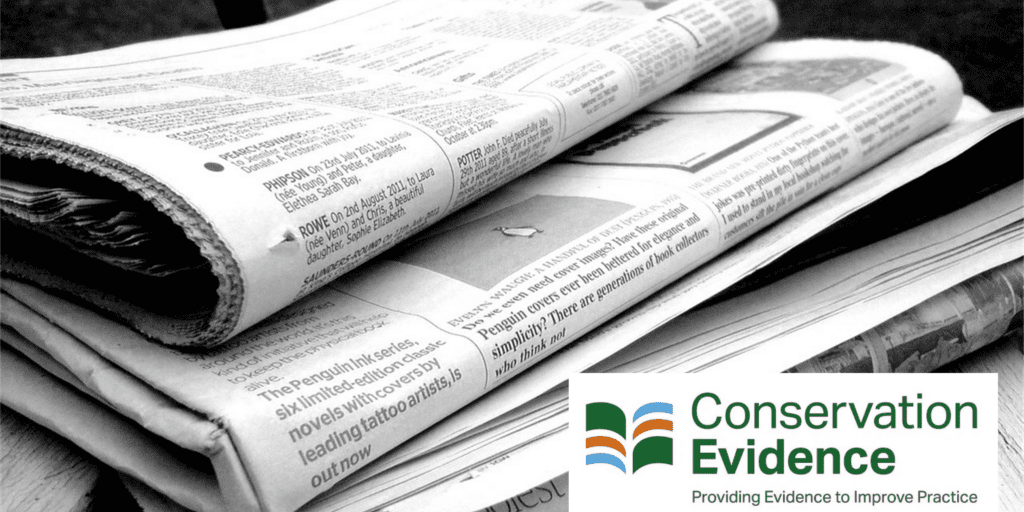The Conservation Evidence project — a truly collaborative and international effort
Rebecca Smith is a Senior Research Associate at the University of Cambridge, and Conservation Evidence Manager.

The Conservation Evidence database was created to provide an easily accessible, free, authoritative information resource to support decisions about how to maintain and restore global biodiversity. So far, we have worked with over eleven hundred named collaborators from across the globe, to create the database and to help facilitate a change to more evidence-based practice. Practitioners, policy makers, academics and funders, all working together to improve conservation practice. Not to mention the 1,015 authors, approximately 65% from practitioner organisations, that have published new evidence in the Conservation Evidence Journal.
It was always important that potential end users were involved in the development of the global evidence resource, to ensure applicability and to encourage uptake. Creating this substantial database of evidence—which now includes summaries of over 8,000 studies testing over 3,500 actions—has been a truly collaborative and international effort, including:
- 70 authors from nine countries to produce the 23 synopses for species groups, habitats or other conservation issues.
- 290 advisory boards members who collaborated with authors to help refine the scope and structure of each synopsis, add relevant actions and literature sources to search, review the protocol and the near-final synthesis. These were practitioners, academics and policy makers representing the geographic range and expertise in diverse topics covered by each synopsis.
- 19 volunteers searched additional English language journals and report series.
- 53 members of the translatE project searched journals in 16 non-English languages.
- 231 additional experts assessed the evidence summarised in synopses to generate a generalized, overall effectiveness category for each action (see What Works in Conservation).

We are hugely grateful to all of these collaborators, who have largely provided their time for free to help produce the Conservation Evidence database.
Conservation Evidence has also worked with practitioners, policy makers and funders to identify barriers and then develop and provide the tools, training and guidance needed to incorporate evidence into conservation projects, including:
- Evidence Champions: organisations that have made a commitment to embed checking Conservation Evidence into their way of working and who we work closely with to support in their use and production of evidence and to co-design tools to aid decision making. So far there are 29 practitioner, funder and other organisations, 40 journals, and 117 educators from 23 countries.
- an ‘Evidence into Practice Working Group’, comprised of 73 individuals from around 60 organisations, who have identified a series of barriers to the adoption of evidence-based conservation practice, and prepared several outputs such as manuscripts and best practice guidelines to share with the wider community.
- a total of 230 authors who have published (see below) or are preparing manuscripts describing tools and guidance to help with decision making.
- a group of 20 people who have prepared Open Access teaching materials for evidence-based conservation in nine languages.

We are also working on collaborative projects with businesses to assess the cost-effectiveness of mitigation actions for energy companies and to develop decision support tools, including the Cool Farm Alliance’s Cool Farm Tool.
As a result of all of these collaborations, we are seeing a broader cultural change to more routine use of evidence in decision making for more effective action for biodiversity conservation. Let’s ensure we do more of what the evidence suggests works and less of what it shows doesn’t work….and if there is no evidence let’s test actions and share the knowledge!
Further reading
Christie, A.P., Abecasis, D., Adjeroud, M., Alonso, J.C., Amano, T. et. al. (2020) Quantifying and addressing the prevalence and bias of study designs in the environmental and social sciences. Nature Communications 11: 6377. https://doi.org/10.1038/s41467-020-20142-y
Christie, A., Amano, T., Martin, P., Simmons, B., Shackelford, G. & Sutherland, W.J. (2019) Simple study designs in ecology produce inaccurate estimates of biodiversity responses. Journal of Applied Ecology 56: 2742-2754. https://doi.org/10.1111/1365-2664.13499
Christie, A.C., Downey, H., Frick, W.F., Grainger, M., O’Brien, D., Tinsley-Marshall, P., White, T.B., Winter, M. & Sutherland, W.J. (2021) A practical conservation tool to combine diverse types of evidence for transparent evidence-based decision-making. Conservation Science and Practice e579. Early view. https://doi.org/10.1111/csp2.579
Ockendon, N., Amano, T., Cadotte, M., Downey, H., Hancock, M.H., Thornton, A., Tinsley-Marshall, P. & Sutherland, W.J. (2021) Effectively integrating experiments into conservation practice. Ecological Solutions and Evidence 2(2): e12069. doi.org/10.1002/2688-8319.12069
Shackelford, G.E., Martin, P.A., Hood, A.S.C., Christie, A.P., Kulinskaya, E. & Sutherland, W.J. (2020) Dynamic meta-analysis: a method of using global evidence for local decision making. bioRxiv. https://doi.org/10.1101/2020.05.18.078840
Shackelford, G., Kelsey, R., Sutherland, W.J., Kennedy, C., Wood, S., Gennet, S., Karp, D., Kremen, C., Seavy, N., Jedlicka, J., Gravuer, K.,Kross, S., Bossio, D., Muñoz-Sáez, A., LaHue, D., Garbach, K., Ford, L., Felice, M., Reynolds, M., Rao, D., Boomer, K., LeBuhn G., & Dicks, L. (2019) Evidence synthesis as the basis for decision analysis: a method of selecting the best agricultural practices for multiple ecosystem services. Frontiers in Sustainable Food Systems 3: Article 83. https://doi.org/10.3389/fsufs.2019.00083
Sutherland, W.J., Downey, H., Frick, W.F., Tinsley-Marshall, P. & McPherson, T. (2021). Planning practical evidence-based decision making within time constraints: the Strategic Evidence Assessment Framework. Journal for Nature Conservation 60: 125975. https://doi.org/10.1016/j.jnc.2021.125975



